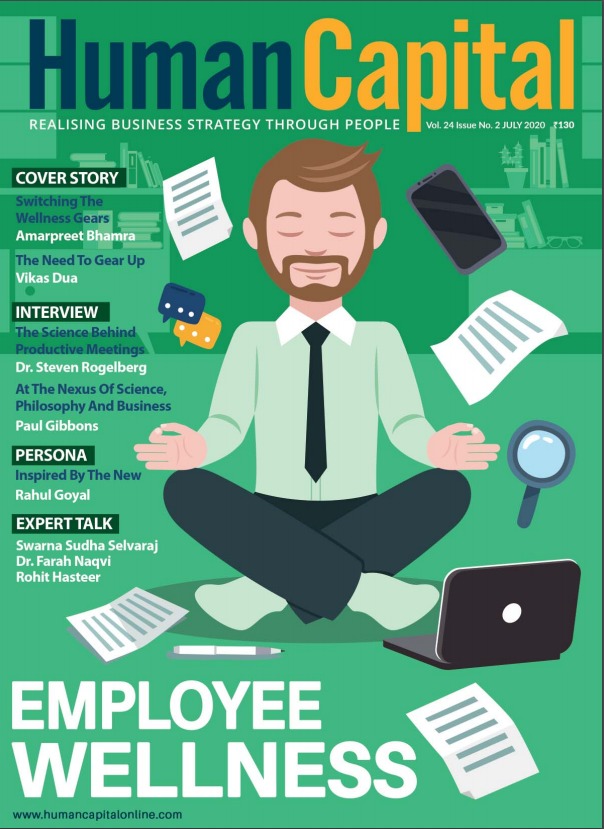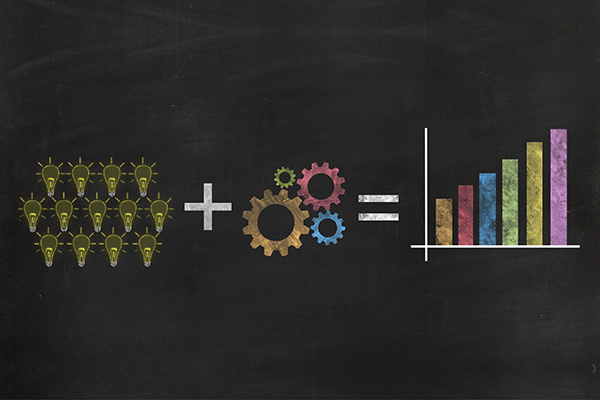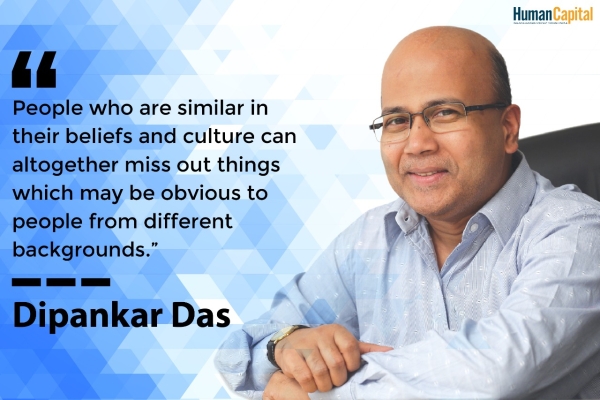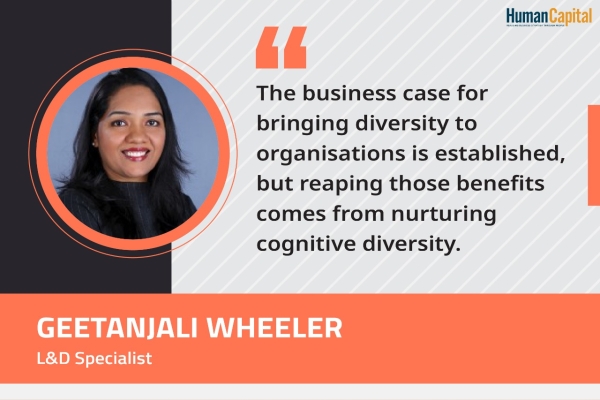In every Train-The-Trainer Programme or Facilitation Skills Workshop delivered by us, one of the key competencies we look out for is the “Engagement with participants / Create & Sustain a Participatory Environment” that the trainer or facilitator does/encourages on the training floor. And, in the post-lunch sessions in particular, our observation antennas would be highly analytical. The tool to enhance this would read as the ability to “WAKE UP! your participants!”
This does not imply that the Trainer/Facilitator becomes an “Entertainer” or a “Circus Clown” (some do tend to end up this way!) and thus get the eyeballs. It is about the learning that is happening in the room and along with it - are the participants enjoying the learning process? Or, are they getting enough insights to use the learnings back in their workplace? This now is the key differentiator between a novice trainer/facilitator and one who is highly-skilled. So, along with keeping participants engaged, what needs to be also kept in mind is the transfer of learnings back in the workplace. As this article is about Wake Up! your participants, we will concentrate on this.
Wake-Up!s does not imply that there are presuppositions that every participant goes to sleep and therefore needs to be woken up, nor does it mean that all trainers/facilitators invariably make participants to go to sleep and therefore the need to Wake them Up!
Usually in content-led training, a trainer is taught the use of “energizers” that are brought out of the trainers’ hat, at any point of time when the energy is low in the room. Energizers are usually short bursts of activity that may not have any connection to the content or the topic of the training and encourages movement, mixing around, doing some motions, and at times, that which can border to informal right-brain fun jerks!
Wake-Up!s on the other hand are short high-energy energizers that are connected directly to the topic. Here, the advantage is that these are not random and disjointed; these can actually be debriefed and can lead to powerful insights. Before choosing the right Wake-Up!s that would gel with your Training Design like a proverbial ‘T’, I would recommend the trainer to first use the STEP to PETS model:
.png)
S – Space (Is the space good enough so that the Wake Up! activity can be unleashed?)
T – Time (How much time will it take and how would it impact the overall timing of the programme/workshop?)
E- Environment (Is the activity diversity sensitive and inclusive to the group?)
P – People (The make of the audience – levels, language, comfort etc.)
*Customize the same by finding out the info in order of PETS, i.e. People first.
Putting WAKE UP!s into a workable framework
It is important to remember that these Wake Up!s should not be long activities, exercises or discussions that as it is adorns a well-designed training/facilitation intervention. This are, if I may say, kept as short bytes!
So, let us put the WAKE UP!s into a workable framework.
1. W – Within 10 minutes (anything longer will turn into a full-fledged activity)
2. A – Animated (make it full of life and excitement)
3. K – Kinesthetic (make them move - learning takes place by physical movement)
4. E – Exchange (exchange fast thoughts, feelings and opinions amongst the learners by mixing them around in various permutations and combinations)
1. U – U-Turns (more twists and turns wake up the brain and heart strings)
2. P – Pros help (use props - paper, playing cards, templates, puzzles, videos etc.)
3. ! - Impact (Debrief through facilitation – seek rather than tell)
In Quotes “Wake-Up!s on the other hand are short high-energy energizers that are connected directly to the topic. Here, the advantage is that these are not random and disjointed; these can actually be debriefed and can lead to powerful insights.”
The more skilled the trainer/facilitator is, the more impact would they create. The key to a great Wake-Up! is the facilitation of the insights that reside in the mind of every learner. The debrief is the key to activation and keeps the learners engaged within their minds and hearts and thus keeps them awake.
Should a Wake-Up! then be designed only post-lunch?
There are 2 ways to look at this – one as mentioned earlier is that the Wake Up! is integrated in the design itself as usually the participants tend to go low in energy at certain times of the day (for e.g. post-lunch, early morning etc.). The second is to keep these within your toolkit as a Kshatriya would keep their knowledge of the shastras – use them when an appropriate opportunity arises. So next time, you have a session to facilitate, Wake Up! your participants.
Do you think hybrid work arrangements would be a common feature of the workplaces going forward?
Trending
-
SBI General Insurance Launches Digital Health Campaign
-
CredR Rolls Out 'Life Happens' Leave For Its Employees
-
Meesho Announces 30-Week Gender-Neutral Parental Leave Policy
-
Microsoft Unveils Tech Resilience Curriculum To Foster An Inclusive Future
-
60% Indian Professionals Looking For Job Change Due To COVID: Survey
-
SpringPeople And Siemens Collaborate For Digital Transformation Push
-
86% Professionals Believe Hybrid Work Is Essential For Work Life Balance: Report
-
Almost 1 In Every 3 People's Personal Life Affected Due To Work Stress
-
Meesho Rolls Out Reset And Recharge Policy For Employees
-
80% Of Talent Leaders & Academics Say Pandemic Changed Skill Needs For Youth: Report
-
Hero Electric Rolls Out 'Hero Care' Program For Employees
-
Human Capital In Collaboration With ASSOCHAM Hosts Virtual Conference
-
IKEA India, Tata STRIVE Collaborate To Create Employability And Entrepreneurship Opportunities
-
SAP India, Microsoft Launch Tech Skilling Program for Young Women
-
DXC Technology, NASSCOM Collaborate For Employability Skills Program
-
Lenskart To Hire Over 2000 Employees Across India By 2022
-
Mindtree Launches Learn-and-Earn Program
-
Tata AIA Extends 'Raksha Ka Teeka' To Its Employees
-
Swadesh Behera Is The New CPO Of Titan
-
NetConnect Global Plans To Recruit 5000 Tech Professionals In India
-
Hubhopper Plans To Hire 60% Of Indian Podcasters By 2022
-
Corporate India Needs More Women In Leadership Roles: Report
-
Aon to Invest $30 Million and Create 10,000 Apprenticeships by 2030
-
Tech Mahindra Launches ‘Gift a Career’ Initiative for Upskilling of Youth
-
40% Women Prefer Flexible Working Options in Post-COVID World: Survey
-
3 out of 4 companies believe they can effectively hire employees virtually: Report
-
Vodafone , CGI and NASSCOM Foundation launch digital skills platform
-
Odisha: Bank, postal employees to deliver cash for elderly, differently-abled persons
-
Skill India launches AI-based digital platform for "Skilled Workforce"
-
Hiring activity declines 6.73% in first quarter: Survey
-
70% startups impacted by COVID-19 pandemic
-
Bajaj Allianz Life ropes in Santanu Banerjee as CHRO
-
Over 70 Percent MSMEs look at cutting jobs to sustain businesses
-
93 Per Cent employees stressed about returning to office post-lockdown
-
Johnson & Johnson India announces family benefits for same gender partners
-
Indian firms turning friendly towards working mothers
-
Welspun India names Rajendra Mehta as new CHRO
-
Wipro partners with NASSCOM to launch Future Skills platform



Human Capital is niche media organisation for HR and Corporate. Our aim is to create an outstanding user experience for all our clients, readers, employers and employees through inspiring, industry-leading content pieces in the form of case studies, analysis, expert reports, authored articles and blogs. We cover topics such as talent acquisition, learning and development, diversity and inclusion, leadership, compensation, recruitment and many more.
Subscribe Now












































Comment